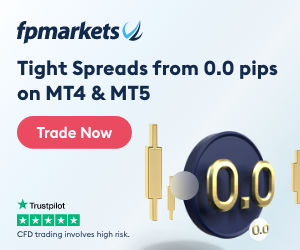-
MetaTrader 4 Brokers
The top MT4 brokers in AU
-
MetaTrader 5 Brokers
The best MT5 brokers in AU
-
TradingView Brokers
The best TradingView brokers
-
cTrader Brokers
The top cTrader brokers in AU
-
Forex Trading Apps
Trade on the go from your phone
-
Copytrading Brokers
Copy professional traders
-
All Trading Platforms
Find a platform that works for you
Trading with exchange-traded products, such as CFDs and other products, always involves risk. Therefore, it is crucial to have a well-planned trading strategy that includes risk management. We have compiled a guide with tips, tools, and techniques that you can use to feel secure in the market.
What are the Risks?
Lack of Knowledge: Before starting Forex trading, proper knowledge is essential. Use a demo account before transitioning to live trading; it’s an excellent way to practice trading in a risk-free environment while getting familiar with the platform and testing various tools and strategies. Educate yourself by participating in webinars and seminars, doing online courses, listening to podcasts, and keeping up with financial news.
Emotional Aspects: It can be difficult to keep emotions in check when the market fluctuates. When using a demo account, try to replicate situations as realistically as possible.
Leverage: With leverage, you can borrow money to open and manage more prominent trading positions than the size of your trading capital allows. This means that profits can be higher, but losses can also be more significant. In Australia, the maximum leverage is 30:1 for brokers regulated by ASIC, so make sure to trade with a regulated and trusted broker.
Volatility: Markets can sometimes change quickly and unexpectedly due to various factors, such as announcements, decisions, or news. Keep track of important events with an economic calendar.
Calculate Your Risk Ratio
Calculating your risk ratio can be helpful to ensure you are not risking too much of your capital. A risk ratio is the relationship between the money you are willing to risk and the potential profit.
You calculate the ratio by dividing the potential profit of a position by the potential loss. Many tend to stick to a maximum ratio of 1:3, meaning that the potential loss on a position is, for example, 200 USD and the maximum potential profit is 600 USD, but this varies depending on how much you are able and willing to risk.
Tools and Techniques for Risk Management
Stop-Loss Orders: A stop-loss order is an instruction that automatically sells an asset when the price reaches a certain level. The purpose is to limit potential losses by closing a position before the loss becomes too substantial.
Negative Balance Protection: Negative Balance Protection is a safeguard that some Forex brokers offer to prevent you from losing more than your invested capital. If the account goes below zero, the broker covers the loss so that you never lose more than what you deposited. Always ensure that your broker offers negative balance protection.
Risk Management Tools: Some brokers have developed their own risk management tools, but you can also use external tools to find and follow a risk management strategy more easily.
Limit Your Capital: Last but not least—CFDs are complex instruments that carry a high risk. Never trade with more capital than you can afford to lose.
Summary
Effective risk management is crucial in Forex trading to protect your capital and minimise potential losses. To manage risks, you should educate yourself, use demo accounts, and stay updated on market developments. Emotional reactions and leverage can increase risk, so it is crucial to have a clear strategy and use tools such as stop-loss orders and negative balance protection.
Stay updated
This form has double opt in enabled. You will need to confirm your email address before being added to the list.

































